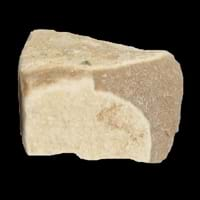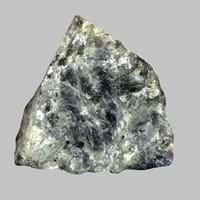Definition
Mudstone is a fine-grained, dark gray sedimentary rock, which is formed from silt and clay and is similar to shale but has less laminations
Anorthosite is a granular igneous rock composed largely of labradorite or plagioclase
Discoverer
Unknown
Unknown
Etymology
From the English mud and stone, from low German mudde and stainaz
From French anorthose plagioclase + -ite1
Class
Sedimentary Rocks
Igneous Rocks
Sub-Class
Durable Rock, Soft Rock
Durable Rock, Medium Hardness Rock
Group
Not Applicable
Plutonic
Other Categories
Fine Grained Rock, Opaque Rock
Coarse Grained Rock, Opaque Rock
Texture
Clastic
Foliated, Glassy
Color
Black, Blue, Brown, Green, Grey, Orange, Red, White, Yellow
Black, Bluish - Grey, Brown, Green, Grey, Light Greenish Grey, Pink, White
Durability
Durable
Durable
Appearance
Rough and Dull
Layered, Banded, Veined and Shiny
Interior Uses
Decorative Aggregates, Entryways, Floor Tiles, Interior Decoration
Decorative Aggregates, Floor Tiles, Homes, Interior Decoration
Exterior Uses
As Building Stone, As Facing Stone, Paving Stone, Roof Tiles
As Building Stone, As Facing Stone, Garden Decoration
Other Architectural Uses
Curbing
Curbing
Construction Industry
Cement Manufacture, Construction Aggregate, for Road Aggregate, Making natural cement, Raw material for the manufacture of mortar
As Dimension Stone, Cement Manufacture, for Road Aggregate
Medical Industry
Not Yet Used
Not Yet Used
Antiquity Uses
Sculpture, Small Figurines
Artifacts, Sculpture, Small Figurines
Commercial Uses
Creating Artwork, Pottery
Creating Artwork, Curling
Types
Marl, Shale and Argillite
Proterozoic Anorthosite and Archean Anorthosite
Features
Available in Lots of Colors and Patterns, Smooth to touch, Very fine grained rock
Generally rough to touch, Is one of the oldest rock
Archaeological Significance
Monuments
Not Yet Used
Not Yet Used
Famous Monuments
Not Applicable
Not Applicable
Famous Sculptures
Data Not Available
Not Applicable
Pictographs
Used
Not Used
Petroglyphs
Used
Not Used
Formation
Mudstone forms when very fine-grained clay particles are deposited in water which settle at the bottom of water bodies. They are buried and compacted by overlying sediment hence forming mudstone.
Anorthosite is a phaneritic, intrusive igneous rock which is characterized by a predominance of plagioclase feldspar which is almost 90–100%, and a minimal mafic component.
Mineral Content
Biotite, Chlorite, Feldspar, Micas, Muscovite or Illite, Plagioclase, Pyrite, Quartz
Amphibole, Clinopyroxene, Ilmenite, Magnetite, Olivine, Orthopyroxene
Compound Content
Aluminium Oxide, NaCl, CaO, Iron(III) Oxide, Silicon Dioxide
Ca, CaO, Chromium(III) Oxide, MgO, Sulfur Trioxide
Types of Metamorphism
Not Applicable
Cataclastic Metamorphism, Contact Metamorphism
Types of Weathering
Chemical Weathering, Mechanical Weathering
Biological Weathering
Types of Erosion
Chemical Erosion, Sea Erosion
Chemical Erosion, Wind Erosion
Grain Size
Very fine-grained
Coarse Grained
Fracture
Not Available
Irregular
Porosity
Highly Porous
Less Porous
Luster
Dull
Pearly to Subvitreous
Cleavage
Perfect
Irregular
Toughness
2.6
Not Available
Specific Gravity
2.2-2.8
2.62-2.82
Transparency
Opaque
Translucent
Density
2.4-2.8 g/cm3
2.7-4 g/cm3
Resistance
Heat Resistant, Impact Resistant
Heat Resistant, Impact Resistant, Pressure Resistant, Scratch Resistant, Wear Resistant
Deposits in Eastern Continents
Asia
Bangladesh, China, India, Russia
Not Yet Found
Africa
Ethiopia, Kenya, Morocco, South Africa, Tanzania
Not Yet Found
Europe
Austria, France, Germany, Greece, Italy, Romania, Scotland, Spain, Switzerland
Bulgaria, France, Germany, Greece, Hungary, Italy, Latvia, Lithuania, Malta, Poland, Portugal, Romania, Slovenia, Spain, Sweden, The Czech Republic
Others
Not Yet Found
Not Yet Found
Deposits in Western Continents
South America
Bolivia, Chile, Colombia, Ecuador, Peru, Venezuela
Bolivia, Colombia
Deposits in Oceania Continent
Australia
New South Wales, New Zealand, Queensland, Victoria, Western Australia
Central Australia, South Australia, Western Australia
All about Mudstone and Anorthosite Properties
Know all about Mudstone and Anorthosite properties here. All properties of rocks are important as they define the type of rock and its application. Mudstone belongs to Sedimentary Rocks while Anorthosite belongs to Igneous Rocks.Texture of Mudstone is Clastic whereas that of Anorthosite is Foliated, Glassy. Mudstone appears Rough and Dull and Anorthosite appears Layered, Banded, Veined and Shiny. The luster of Mudstone is dull while that of Anorthosite is pearly to subvitreous. Mudstone is available in black, blue, brown, green, grey, orange, red, white, yellow colors whereas Anorthosite is available in black, bluish - grey, brown, green, grey, light greenish grey, pink, white colors. The commercial uses of Mudstone are creating artwork, pottery and that of Anorthosite are creating artwork, curling.










